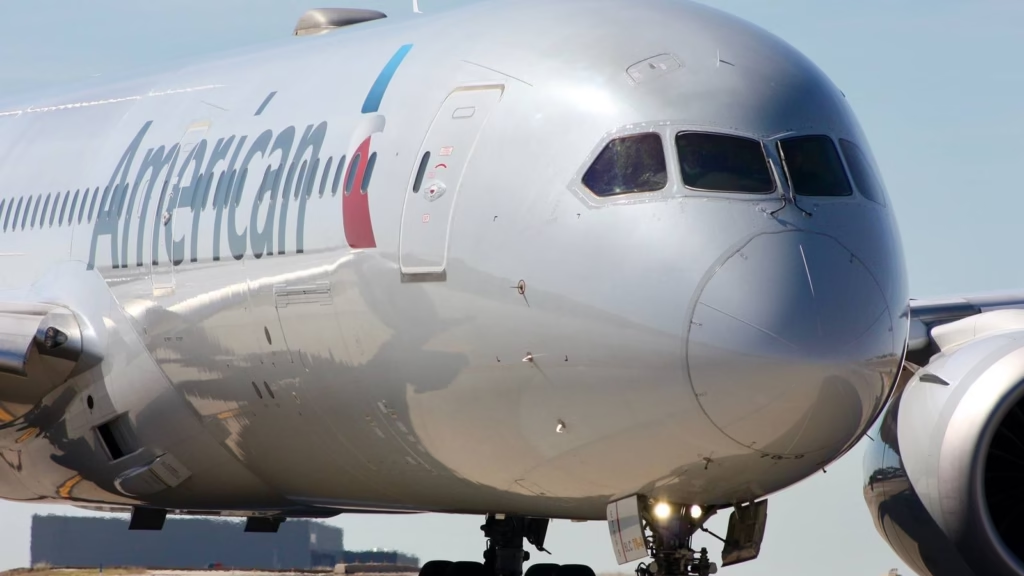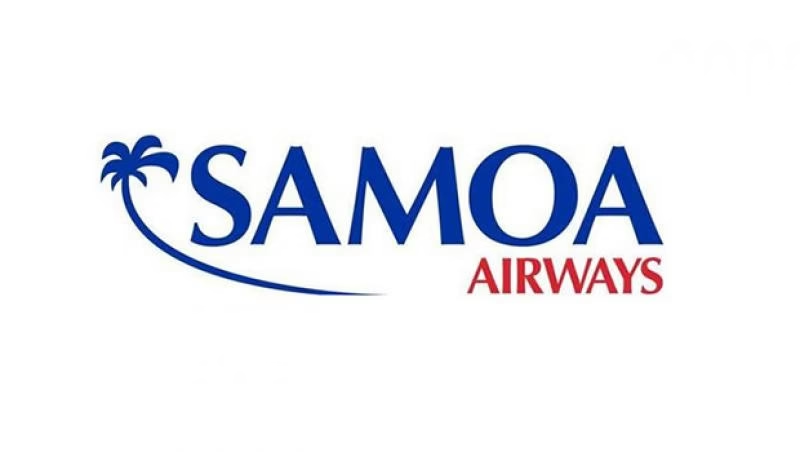In recent years, American Airlines Using its fleet of Boeing 787‑9 Dreamliners, has pushed the boundaries of long-traveling, which is more relaxed and efficiently to connect far-flung corners of the world. The longest 787‑9 routes of the airline show not only the technological development of modern aviation in fuel efficiency, boundary and passenger comfort, but also reflects the transfer of priorities in international air travel, direct connectivity, seasonal demand and extending the premium service.
From new record breakers between Dallas/Fort Worth International AirportAnd Brissben airportFor seasonal hops on Prashant, these routes map a changing global network that increases physical and commercial boundaries for blowing nonsstops. In this article, we will find out the farthest-growth of the American 787, 9 services, how far they fly, what makes them possible, and they tell us what they tell us about the future of ultra-long hall journey.
Ultra-Ling-Hall Global Connectivity: 7,000 to 9,000 miles
Many Ultra-Long-Hall routes of American Airlines fall in a range of 7,000–9,000 miles, connecting the United States with major destinations worldwide. The longest such example is Dallas/Fort Worth International (DFW) Brissben airport (BNE), at a distance of about 8,299 miles. The American has about 144 flights in each direction scheduled on this route for 787–9 this year, which offers about 39,000 seats per leg. This nonstop service connects Texas to Australia’s third largest city, which shows the increasing demand for transpecular travel beyond the traditional entrance. Los Angeles International Airport
Another important market is DFW Auckland Airport (AKL) at 7,439 miles. With 138 flights in each way and more than 39,000 seats per direction, this service strengthens the American Pacific appearance. Bypassing the West Coast Hub, the DFW -Cl provides direct connectivity for passengers from the central and eastern regions of the United States, which supports both tourism and business relations with New Zealand. The route also increases coalition connectivity, as the American coordinates closely with Qantas in the region.
In Asia, DFW Shanghai Pudong International Airport (PVG) route is 7,351 miles. Set for 248 Eastbounds and 247 WestBound flights, it keeps more than 70,000 seats per direction, so far highlight the role of Shanghai as a major economic hub.
Long-Hall Transocinic and Intercontinental Services: 5,000 to 7,000 miles
American transoconic flights fall within a range of 5,000–7,000 miles, connecting the US to parts of South America, Europe and Asia. A prominent example is John F. Kennedy International Airport (Jfk) Tokyo Henada Airport(HND) service at 6,773 miles. In each direction and with 359 flights in more than 102,000 seats, this route underlines us the strong demand for Japan connectivity. The Tokyo remains an important center for business and holiday passengers, and the convenient place of Henda near the city center makes it a particularly attractive entrance.
On South America front, DFW for Buenos Aires’ Aziza international airport (Eze) route extends to 5,286 miles. Each way with about 66 flights and more than 16,000 seats. Similarly, DFW Sao Paulo Virkopos International Airport These connections are important for trade and multinational corporate travel between the US and South America.
The American also deploys its Boeing 787-9S on several transatlantic routes in this mileage band. For example, Philadelphia International Airport(PHL) Doha Hamad International Airport (DOH) is operated daily at a distance of 6,798 miles, a total of 366 annual flights and more than 104,000 seats. Another example is the route from Los Angeles International Airport (LAX) to Tokyo Henada (HND), which extends 5,488 miles with more than 240 annual flights and about 69,000 seats in each direction. These routes show an example of how to demand American balance between US balance between Europe, Middle East and Asia, taking advantage of Philadelphia and Los Angeles apart from New York and Dallas.
Comparison of American’s longest routes
The routes in a 5,000–7,000 mile bands make backbones of American long-lasting portfolio. These services produce more than 850,000 seats and are for the largest stake of the long-hall ASM. Markets such as New York -Tokio Henada, Philadelphia -Daha, and Dallas -Saio Paulo are the strongest contributors.
In contrast, there are very few flights in the 7,000–9,000 mile bands, which are more than 1,000 annually, but showing some of the 787–9 range and capacity, represents some of the ultra-long-hall markets. The routes -Bisbane, Dallas -Ockland, and Dallas -Shanghai fall into this category, connecting America directly to Oceania and East Asia. While the yoga of the seat is smaller than 297,000, strategic importance is high, as these markets occupy long-term holiday demands, premium business travel and coalition-managed connectivity.
Mileage band | stamp | Seats | ASMS (Available Seat Mile) | AVG. Distance (mile) |
|---|---|---|---|---|
5,000-7,000 | 3,039 | 859,760 | 5.24 billion | ~ 5,986 |
7,000–9,000 | 1,059 | 297,059 | 2.26 billion | ~ 7,696 |
When comparing both, it is clear that the 5,000–7,000 miles of passages distribute high seat and frequency versions, supporting the established business and the stable traffic flow between the cultural hub. Meanwhile, 7,000–9,000 miles of flights, although low, expands the global access of American and bring diversity to their network. Together, they describe the long-term strategy of American Airlines, which consolidate their strength in a moderate to long transoconic trip while competing in the ultra-long hall erina, where the length and operating efficiency of the stage becomes major discrimination.
Balancing domestic and foreign connectivity: 2,000 to 5,000 miles
Sections of 2,000–5,000 miles include many of the American transatlantic services, connecting the American Hub to Europe. A strong example is Philadelphia International Airport(PHL) London Heathro Airport (LHR) route at a distance of 3,546 miles. With 576 annual flights in each direction and over 156,000 seats, it is one of the largest long -lasting markets of the airline. Other major transatlantic routes include Philadelphia International Airport (PHL) Zurich airport (ZRH) 4,025 miles, and Philadelphia International Airport (PHL) Barcelona-L Prat Airport(BCN) At a distance of 3,925 miles, both offer more than 29,000 seats annually.
The mileage band also includes some of the most busy South American routes of Americans. For example, jfk Sao Paulo Virkopos International Airport (Gru) with more than 104,000 seats at a distance of 4,745 miles, provides 366 annual flights in each way. Similarly, European Connection, Dallas/Fort Worth Two Madrid Barajs Airport (MAD) at a distance of 4,966 miles, saves more than 9,000 seats annually. These routes create a balance between corporate demand and holiday traffic, which ensure continuous year -long service.
The following table displays the top 5 routes in the ranked 2000–5000 miles ranked by ASMS.
route | Distance (mile) | stamp | Seats | ASMS (Available Seat Mile) |
|---|---|---|---|---|
LHR -ORD | 3,953 | 933 | 245,487 | 970,410,111 |
Ord -LHR | 3,953 | 933 | 245,405 | 970,085,965 |
LHR -phl | 3,546 | 576 | 156,124 | 553,615,704 |
PHL -LHR | 3,546 | 576 | 156,083 | 553,470,318 |
Gru -JFK | 4,745 | 366 | 104,310 | 494,950,950 |
The band also includes American domestic services in a small set of routes where 787–9 is selected. For example, Honolulu International Airport(HNL) for Dallas/Fort Worth, which measures at a distance of 3,784 miles, with limited six flights per direction, while lax from PHL operates 2,401 miles with only 12 rounds of 12 round-trip. These deployment are often inspired by the needs of fleet use or seasonal demand. Collectively, the American strategy of using a 2,000–5,000 mile route 787-9 anchor the core transatlantic and South American services, while flexible flexible it assumed it in domestic or near-inter-departmental markets in a flexible manner when capacity or aircraft is aligned with range network requirements.
Widebody princely on short-hall routes: less than 2,000 miles
American deployed 787–9 on very small routes of less than just 2,000 miles, and these mainly appear to be mainly for demanding position, capacity balance, or seasonal peak. One of the smallest is DFW Phoenix Sky Harbor International Airport It reflects the use of a widebody aircraft on a domestic trunk route that is usually served by narrowness.
Another notable small area is DFW Orlando international airport(MCO) at 984 miles. Six flights are listed in each way with about 1,700 seats in the schedule, which suggests topical deployment to absorb high holiday demand in Orlando. Similarly, DFW Las Vegas McAcaran International Airport(LAS), at a distance of 1,055 miles, appears with 22 flights each way and with more than 6,000 seats. These high-profile holiday routes may experience an increase in passenger volumes, making the widebody aircraft a useful supplement despite their disability on short hops.
on the east Coast, Miami International Airport (Mia) JFKThe length of the platform of 1,090 miles is determined with 36 annual flights in each direction. With more than 10,000 seats, this market benefits from premium demand and high-existing competition, which can justify the use of topical 787–9. Additionally, PHL to DFW route, at a distance of 1,302 miles, is a popular option, with more than 240 flights and about 70,000 seats available in every way. In sub -2,000 -mile markets, this is the most consistent widebody purinogen, due to its functioning as a key Hub-hub connectorFeeding American’s long-hall network.
A wide work worldwide
In the 2025 schedule of American Airlines, Boeing 787-9 has been deployed in a variety of routes, which exceeds 8,000 miles from Ultra-Ling-Hall flights less than 1,000 miles from small domestic areas. Overall, the aircraft will operate more than 12,000 flights, producing about 3.4 million seats and more than 16.5 billion seats miles (ASMS).
Covering the transatlantic markets from Philadelphia and New York, the wholesale of operation is 5,000–7,000 miles, as well as major South American Hubs such as Sao Paulo and Buenos Aires. These routes are the busiest in the network, with strong demands from both daily or close-legal service and corporate and holiday passengers. They make backbones of American international connectivity.
At extreme loops, supporting strategic domestic deployment to meet 787–9 capacity needs and also operate strategic ultra-long-hall services. Together, this pattern highlights the flexibility of the aircraft, balances worldwide coverage around the world, which has a customization capacity to cover small deployment, making 787–9 American fleet the cornerstone.



